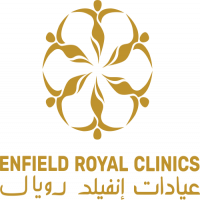Facelift Surgery Explained: The Ultimate Guide for a Youthful Transformation

Introduction
In a world where maintaining a youthful appearance is highly valued, facelift surgery has become a popular option for those seeking to turn back the clock. But what exactly is a facelift, and why has it gained such prominence in the realm of cosmetic procedures?
What is Facelift Surgery?
Facelift surgery, also known as rhytidectomy, is a cosmetic procedure designed to reduce the visible signs of aging on the face and neck. This includes sagging skin, deep creases around the mouth and nose, jowls, and loose skin on the neck. By tightening underlying tissues, removing excess skin, and redraping the skin on the face and neck, a facelift can create a more youthful and refreshed appearance.
Importance of Facelift Surgery in Modern Cosmetic Procedures
Facelift surgery holds a significant place in modern cosmetic surgery due to its comprehensive approach to facial rejuvenation. Unlike non-surgical treatments, The Ultimate Guide To Facelift Surgery: What You Need To Know, a facelift offers more dramatic and long-lasting results, making it a preferred choice for individuals seeking substantial improvements in their appearance.
Understanding the Basics of Facelift Surgery
History of Facelift Surgery
Facelift surgery has come a long way since its inception. The first facelifts were performed in the early 20th century, primarily involving simple skin lifting. However, advancements in medical science and surgical techniques have transformed the procedure into a sophisticated operation capable of delivering natural-looking results.
Evolution and Advancements in Techniques
Today’s facelifts incorporate a variety of techniques that focus not only on the skin but also on the deeper layers of the face. These advancements allow surgeons to achieve more subtle and enduring outcomes. Innovations such as the SMAS (Superficial Musculoaponeurotic System) technique and deep plane facelifts have revolutionized the field, offering patients enhanced results with reduced recovery times.
Types of Facelift Surgery
Traditional Facelift
A traditional facelift addresses the lower two-thirds of the face and the neck. This technique is ideal for individuals with significant signs of aging, such as deep wrinkles and sagging skin. The procedure involves making incisions around the hairline and ears, allowing the surgeon to lift and tighten the underlying muscles and tissues.
Mini Facelift
The mini facelift is a less invasive option that targets the lower face and jawline. It’s suitable for younger patients or those with less severe signs of aging. The procedure requires smaller incisions, resulting in a quicker recovery and less visible scarring.
Mid-Facelift
A mid-facelift focuses on the middle part of the face, particularly the cheeks and under-eye area. By lifting the fat pads in the cheeks, this technique can restore a youthful contour and reduce the appearance of nasolabial folds.
Thread Lift
Thread lifts involve using temporary sutures to produce a subtle but visible lift in the skin. This procedure is minimally invasive and has a shorter recovery time, making it a popular choice for those seeking a quick refresh.
Deep Plane Facelift
The deep plane facelift targets the deeper structures of the face, providing more dramatic and long-lasting results. By repositioning the deeper tissues, this technique can achieve a more natural and youthful appearance.
Who is a Good Candidate for a Facelift?
Ideal Age Range
While there is no perfect age for a facelift, most candidates are between 40 and 70 years old. The procedure can be effective for younger patients who have significant signs of aging and older patients who are in good health.
Skin Type Considerations
Skin elasticity plays a crucial role in facelift success. Individuals with relatively good skin elasticity and bone structure typically achieve the best results. However, advancements in techniques have made it possible for people with less ideal skin conditions to benefit from the procedure.
Health Requirements
Good overall health is essential for anyone considering facelift surgery. Candidates should be non-smokers, free of serious medical conditions, and have realistic expectations about the outcomes.
Preparing for Facelift Surgery
Initial Consultation
The journey to a successful facelift begins with a thorough consultation with a qualified plastic surgeon. During this meeting, the surgeon will assess your medical history, discuss your goals, and determine the most appropriate technique for your needs.
Preoperative Guidelines
Before the surgery, patients may need to undergo certain medical tests and adjust their medications. It’s also important to avoid smoking and limit alcohol consumption to ensure optimal healing.
Lifestyle Adjustments
Maintaining a healthy lifestyle can significantly impact the success of your surgery. Eating a balanced diet, staying hydrated, and following a regular skincare routine can help prepare your skin for the procedure.
The Facelift Procedure: Step-by-Step
Anesthesia Options
Facelift surgery can be performed under general anesthesia or local anesthesia with sedation. The choice depends on the extent of the procedure and the patient’s comfort level.
Incision Techniques
The location and length of incisions vary based on the type of facelift. Typically, incisions are made along the hairline, around the ears, and sometimes under the chin. These strategic placements help minimize visible scarring.
Tissue Repositioning
Once the incisions are made, the surgeon lifts and repositions the underlying muscles and tissues. This step is crucial for achieving a natural and long-lasting lift.
Recovery and Aftercare
Immediate Postoperative Care
After the surgery, patients are typically monitored in a recovery area. It’s common to experience swelling, bruising, and discomfort, which can be managed with prescribed medications.
Managing Swelling and Bruising
Keeping your head elevated and applying cold compresses can help reduce swelling and bruising. Your surgeon will provide specific instructions on how to care for your incisions and manage pain.
Conclusion
Facelift surgery offers a transformative solution for individuals looking to rejuvenate their appearance and regain confidence. By understanding the various aspects of the procedure, from preparation to recovery, you can make an informed decision about whether it’s right for you. Always consult with a board-certified plastic surgeon to discuss your goals and explore the best options for achieving a youthful transformation.
Note: IndiBlogHub features both user-submitted and editorial content. We do not verify third-party contributions. Read our Disclaimer and Privacy Policyfor details.







